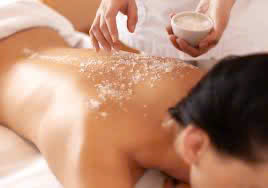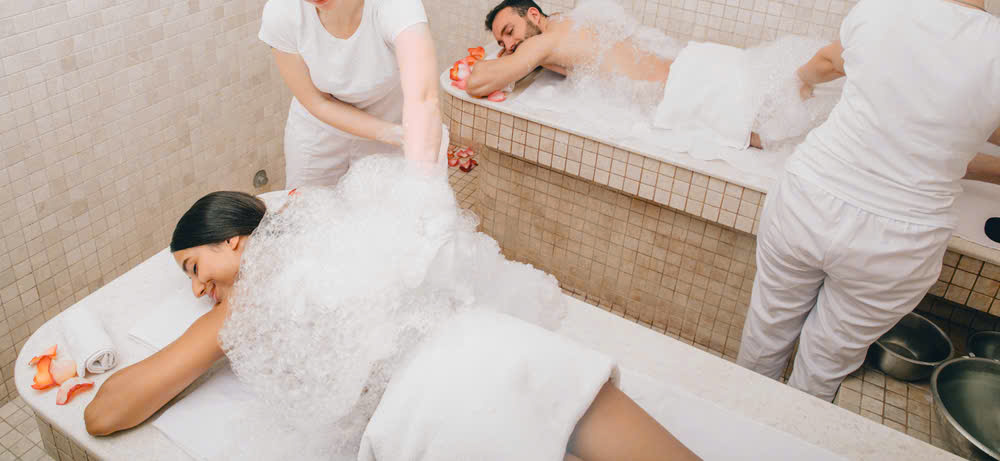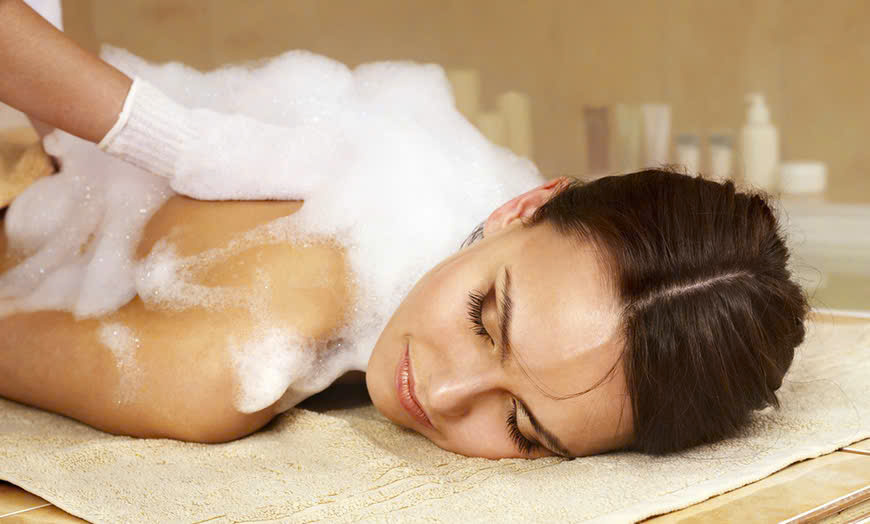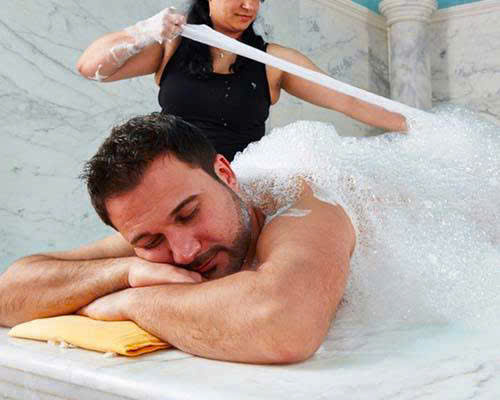Why Arabic Massage and Moroccan Bath Are the Ultimate Relaxation Experience
When it comes to holistic wellness and pure relaxation, few experiences can match the indulgence of Arabic massage and Moroccan bath. These traditional therapies have been cherished for centuries across Middle Eastern and North African cultures, offering more than just physical relief—they provide a profound sense of rejuvenation for both body and mind. Whether you’re seeking stress relief, skin renewal, or simply a luxurious escape from daily life, exploring what is Arabic massage and Moroccan bath can transform your approach to self-care.
In this comprehensive guide, we will delve deep into what exactly Arabic massage and Moroccan bath are, explore their top benefits, distinguish them from similar treatments like jacuzzi baths, explain how they work, and uncover why they are considered some of the most amazing relaxation methods available today. Prepare to discover a world where tradition meets wellness, promising serenity, health, and a renewed sense of vitality.

Arabic Massage and Moroccan Bath
The concept of Arabic massage and Moroccan bath embodies an age-old tradition rooted in cultural rituals that emphasize cleansing, healing, and relaxation. These practices are not merely about physical therapy but serve as spiritual and cultural expressions passed down through generations. The experience often involves a harmonious combination of warm environments, aromatic oils, exfoliation, and rhythmic massage techniques designed to detoxify and invigorate.
The ambiance during these treatments evokes a sensory journey—rich scents, warm textures, and tranquil sounds—that transport individuals to a realm of serenity. They are often performed in specialized settings that reflect the grandeur of Middle Eastern aesthetics, with elements like intricate tile work, plush cushions, and ambient lighting enhancing the overall experience.
Today, Arabic massage and Moroccan bath have gained popularity worldwide, adapted into modern spas and wellness centers, integrating traditional methods with contemporary comfort. This fusion provides an accessible yet authentic way to enjoy centuries-old traditions, making it ideal for anyone seeking profound relaxation and holistic health benefits.
Cultural Significance of Arabic Massage and Moroccan Bath
Understanding the cultural roots adds depth to these practices. Historically, Moroccan baths served as communal spaces for cleansing, socializing, and spiritual purification. The ritual involved multiple stages—from steam and exfoliation to oil application and massage—each symbolizing renewal.
Meanwhile, Arabic massages incorporate techniques such as gentle kneading, deep tissue work, and rhythmic tapping, often utilizing natural ingredients like olive oil, argan oil, and fragrant herbs. These elements are designed not only for physical benefits but also to create a meditative state that fosters mental clarity and emotional well-being.
Embracing these traditions today allows individuals to connect with a rich cultural heritage while enjoying modern health benefits, making Arabic massage and Moroccan bath a holistic approach that nurtures the body, mind, and soul.

What is Arabic Massage and Moroccan Bath
To truly appreciate what is Arabic massage and Moroccan bath, it’s essential to understand their composition, process, and unique characteristics. Both treatments are intricate rituals blending specific techniques and ingredients, aimed at maximum relaxation and health improvement.
Arabic massage is characterized by its use of long, flowing strokes, acupressure, and targeted muscle manipulation. It combines elements of deep tissue therapy with gentle calming motions, often tailored to individual needs. The massage typically employs aromatic oils infused with natural herbs, which enhance relaxation, stimulate circulation, and nourish the skin.
Moroccan bath, on the other hand, is a comprehensive cleansing ritual involving several carefully orchestrated steps. It usually begins with steaming the body in a heated room to open pores, followed by thorough exfoliation using traditional scrubs like kessa gloves—rough cloth gloves made from natural fibers that slough away dead skin cells. After exfoliation, a layer of fragrant clay or black soap is applied to purify and soften the skin. The process culminates with an application of nourishing oils and sometimes a massage to lock in moisture.
Together, these treatments promote detoxification, skin revitalization, and deep relaxation, making them a holistic approach to wellness. They can be customized to address specific health concerns like muscle tension, skin issues, or stress management.
Key Features of Arabic Massage and Moroccan Bath
- Use of natural ingredients such as olive oil, argan oil, black soap, and herbal infusions.
- Incorporation of traditional techniques rooted in centuries-old practices.
- Emphasis on cleansing, exfoliation, hydration, and relaxation.
- Multi-step process involving steaming, scrubbing, oiling, and massage.
- Designed to promote physical health, mental tranquility, and spiritual renewal.
Understanding what is Arabic massage and Moroccan bath reveals their importance as cultural rituals that transcend mere spa treatments—they are holistic healing arts that bring balance and rejuvenation in a profound way.
Top 5 Benefits of Arabic Massage and Moroccan Bath
Engaging in Arabic massage and Moroccan bath offers a plethora of physical, mental, and emotional benefits. These treatments go beyond superficial pampering to address underlying health and well-being concerns.
Here are the top 5 benefits that make these ancient therapies stand out:
- Detoxification and Skin Rejuvenation
- Stress Reduction and Mental Clarity
- Muscle Relaxation and Pain Relief
- Improved Circulation and Lymphatic Drainage
- Enhanced Skin Texture and Appearance
Let’s explore each benefit in detail.
Detoxification and Skin Rejuvenation
A core purpose of Moroccan bath is to facilitate detoxification. The steaming step opens pores, allowing toxins to be released from the body. Then, the vigorous exfoliation with traditional scrubs removes dead skin cells, revealing fresh, radiant skin underneath. The use of natural oils afterward nourishes and moisturizes, resulting in a smoother, more youthful appearance.
This process not only improves skin health but also supports the body’s natural detox pathways, boosting immunity and overall vitality. Regular treatments can diminish skin issues such as dullness, dryness, or uneven tone, replacing them with a healthy glow.

Stress Reduction and Mental Clarity
Both Arabic massage and Moroccan bath serve as powerful stress relievers. The rhythmic movements of the massage induce a meditative state, reducing cortisol levels and promoting feelings of calm. Aromatic oils and soothing environments further enhance relaxation, helping to alleviate anxiety and mental fatigue.
The sensory immersion offered by these treatments allows individuals to disconnect from daily worries, fostering mental clarity and emotional balance. This holistic approach promotes better sleep, improved mood, and resilience against stressors.
Muscle Relaxation and Pain Relief
Targeted massage techniques help release muscular tension, alleviate stiffness, and diminish pain caused by overexertion or chronic conditions. The deep pressure applied during Arabic massage, combined with heat from the steam and warm oils, penetrates deeply into tissues, soothing sore muscles and promoting flexibility.
Additionally, the exfoliation process stimulates blood flow, aiding in nutrient delivery and waste removal from tissues. These effects contribute to faster recovery from physical strain and reduce discomfort associated with conditions like arthritis or muscle knots.
Improved Circulation and Lymphatic Drainage
A significant benefit of Arabic massage and Moroccan bath is enhanced circulation. The combination of massage strokes, steam, and exfoliation encourages blood flow, ensuring oxygen and nutrients reach all body parts efficiently. This improved circulation supports overall cardiovascular health and boosts energy levels.
Lymphatic drainage, a vital component of detoxification, is also stimulated during these treatments. By promoting lymph flow, the body becomes more effective at removing toxins and waste products, leading to a healthier immune response and reduced swelling or fluid retention.
Enhanced Skin Texture and Appearance
Regularly indulging in Moroccan bath sessions results in visibly improved skin texture. The removal of dead skin cells, combined with deep nourishment from oils and clay masks, leaves skin softer, brighter, and more supple.
Moreover, the natural ingredients used—like argan oil and herbal infusions—are rich in antioxidants and vitamins, providing anti-aging benefits and protecting against environmental damage. The overall effect is youthful, glowing skin that reflects inner health and vitality.
Overall Impact on Well-Being
The cumulative effect of these benefits creates an overall sense of well-being. From physical health improvements to mental clarity and emotional stability, Arabic massage and Moroccan bath represent a comprehensive approach to achieving optimal health and happiness.
What is the Difference Between Jacuzzi Bath and Arabic Massage and Moroccan Bath?
When exploring relaxation options, many people wonder what is the difference between Jacuzzi bath and Arabic massage and Moroccan bath. Both offer relaxation but differ significantly in their methodologies, sensations, and benefits.
Understanding these differences can help you choose the most suitable treatment for your needs.
Jacuzzi Bath: An Overview
A Jacuzzi bath involves soaking in a hot tub equipped with whirlpool jets that produce bubbling water. This method emphasizes hydrotherapy, focusing on comfort, buoyancy, and warmth to relax muscles and ease joint pain. Jacuzzi tubs are widely available in spas and homes, offering an accessible form of aquatic therapy.
The primary appeal of a Jacuzzi is its capacity to deliver continuous warm water with massaging jets that target specific muscle groups. It’s a passive experience—simply immersing oneself in warm, bubbly water for relaxation and pain relief.
Key Characteristics of Jacuzzi Baths
- Passive treatment; no active manipulation involved.
- Uses heated water and jets for muscle relaxation.
- Enhances circulation via warmth and mechanical stimulation.
- Often incorporates aromatherapy or lighting for ambiance.
Comparing the Experiences
While Jacuzzi baths are excellent for immediate relaxation and relieving muscle soreness, they lack the multi-layered cleansing, exfoliating, and cultural aspects of Arabic massage and Moroccan bath. Jacuzzi baths primarily focus on hydrotherapy, which can be beneficial but do not offer the deep cleansing or skin revitalization achieved through traditional Moroccan rituals.
In contrast, Arabic massage and Moroccan bath combine physical manipulation with sensory stimulation, promoting detoxification, skin health, and mental peace. They involve active participation—scrubbing, massaging, and applying natural ingredients—creating an immersive experience unlike the passive soak of a Jacuzzi.
Which Is Better for You?
Choosing between these options depends on your personal preferences and wellness goals. If you seek purely relaxation with muscle soothing, a Jacuzzi might suffice. However, if you aim for a holistic treatment addressing skin, detoxification, and mental well-being, then Arabic massage and Moroccan bath are superior choices.
Complementary Therapies
It’s worth noting that these therapies are not mutually exclusive. Combining a Jacuzzi soak with a Moroccan bath session can maximize relaxation and health benefits, catering to both passive and active wellness needs.
How It Works
Understanding how it works—the mechanics and science behind Arabic massage and Moroccan bath—demystifies these treatments and underscores their efficacy.
The Role of Heat and Steam
Steam is fundamental in the Moroccan bath process. It opens the pores, softens dead skin, and prepares the body for exfoliation. The warmth increases blood flow, which accelerates detoxification and enhances nutrient delivery to tissues.
The heat also has a calming effect on the nervous system, reducing stress hormones and inducing relaxation. This physiological response amplifies the therapeutic benefits, making subsequent massage and exfoliation more effective.
Exfoliation: Removing Dead Skin Cells
Exfoliation is achieved through traditional tools like kessa gloves or natural scrubs. This mechanical process physically dislodges dead skin, promotes cell regeneration, and unclogs pores. It prepares the skin to absorb nourishing oils better, leading to longer-lasting softness and glow.
The exfoliating action also stimulates collagen production, which maintains skin elasticity and firmness. Regular exfoliation helps prevent ingrown hairs, breakouts, and dullness.
Massage Techniques and Their Effects
Arabic massage employs a variety of strokes—long gliding, kneading, tapping—that manipulate muscles and connective tissue. The techniques stimulate blood flow, loosen tension, and promote lymphatic drainage. The use of aromatic oils adds aromatherapy benefits, elevating relaxation and mood.
The massage’s rhythm and pressure are tailored to individual needs, targeting areas of pain or stiffness. Deep tissue work can relieve chronic muscle knots, while lighter strokes induce a sense of calm.
Nutrient Absorption and Skin Nourishment
Post-exfoliation and massage, oils infused with herbs and antioxidants penetrate deeply into the skin. These ingredients hydrate, repair damage, and provide protective effects against environmental stressors. The skin becomes more resilient, luminous, and supple.
This multi-step process fosters a cycle of cleansing, nourishing, and relaxing that rejuvenates the entire body holistically.
Why Arabic Massage and Morocan Bath Is Amazing Relax
The allure of Arabic massage and Moroccan bath lies in their ability to combine physical therapy, spiritual ritual, and sensory indulgence into one seamless experience. Several factors contribute to why these treatments are considered some of the most amazing relaxation methods.
Tradition-Driven Mindfulness and Ritual
Participating in these time-honored rituals connects individuals to a cultural lineage of wellness. Ritualistic elements—such as precise steps, fragrant ingredients, and serene environments—induce a meditative state that calms the mind and alleviates anxiety.
This mindful engagement transforms a simple spa visit into a sacred act of self-love and spiritual renewal, heightening the relaxation response.
Multi-Sensory Experience
From the aromatic oils and herbal infusions to the textured scrubs and soothing music, every aspect appeals to the senses. This sensory richness enhances the overall experience, making it immersive and memorable.
Such multisensory stimulation is proven to reduce stress hormones and increase feelings of pleasure, contributing to a deep state of relaxation.
Physical and Emotional Healing
Beyond surface-level comfort, these therapies address underlying health issues—improving circulation, reducing muscular pain, detoxifying the body, and calming the nervous system.
They also foster emotional well-being by promoting mindfulness, releasing endorphins, and creating a sense of accomplishment in caring for oneself.
Customizable and Holistic Approach
Arabic massage and Moroccan bath can be tailored to individual preferences and needs. Whether someone desires intense muscle therapy, gentle skin renewal, or mental tranquility, practitioners can adapt techniques accordingly.
This personalized care ensures maximum effectiveness and satisfaction, reinforcing their reputation as holistic wellness solutions.
The Path to Lasting Wellness
Consistent participation in Arabic massage and Moroccan bath can lead to lasting improvements in overall health, emotional stability, and skin vitality. Their integration into regular self-care routines fosters resilience against stress and physical ailments.
The cultural richness, combined with tangible health benefits, makes these therapies profoundly satisfying and genuinely

Conclusion
Arabic massage and Moroccan bath are timeless traditions that seamlessly blend cultural heritage with holistic wellness. Their comprehensive approach—combining steaming, exfoliation, nourishing oils, and skilled massage—addresses physical, mental, and spiritual needs, making them an unparalleled relaxation experience. Unlike passive treatments like jacuzzi baths, these rituals actively engage the senses and the body, resulting in detoxified skin, relaxed muscles, reduced stress, and a profound sense of rejuvenation. Understanding what is arabic massage and morocan bath, appreciating their myriad benefits, and recognizing how they operate reveals why they are regarded as some of the most wonderful ways to achieve ultimate relaxation. Embarking on this journey promises not only transient relief but also enduring improvements in health, beauty, and emotional well-being, establishing them as essential components of a balanced, mindful lifestyle.https://jobedubaispa.com/lymphatic-drainage-massage-2/
